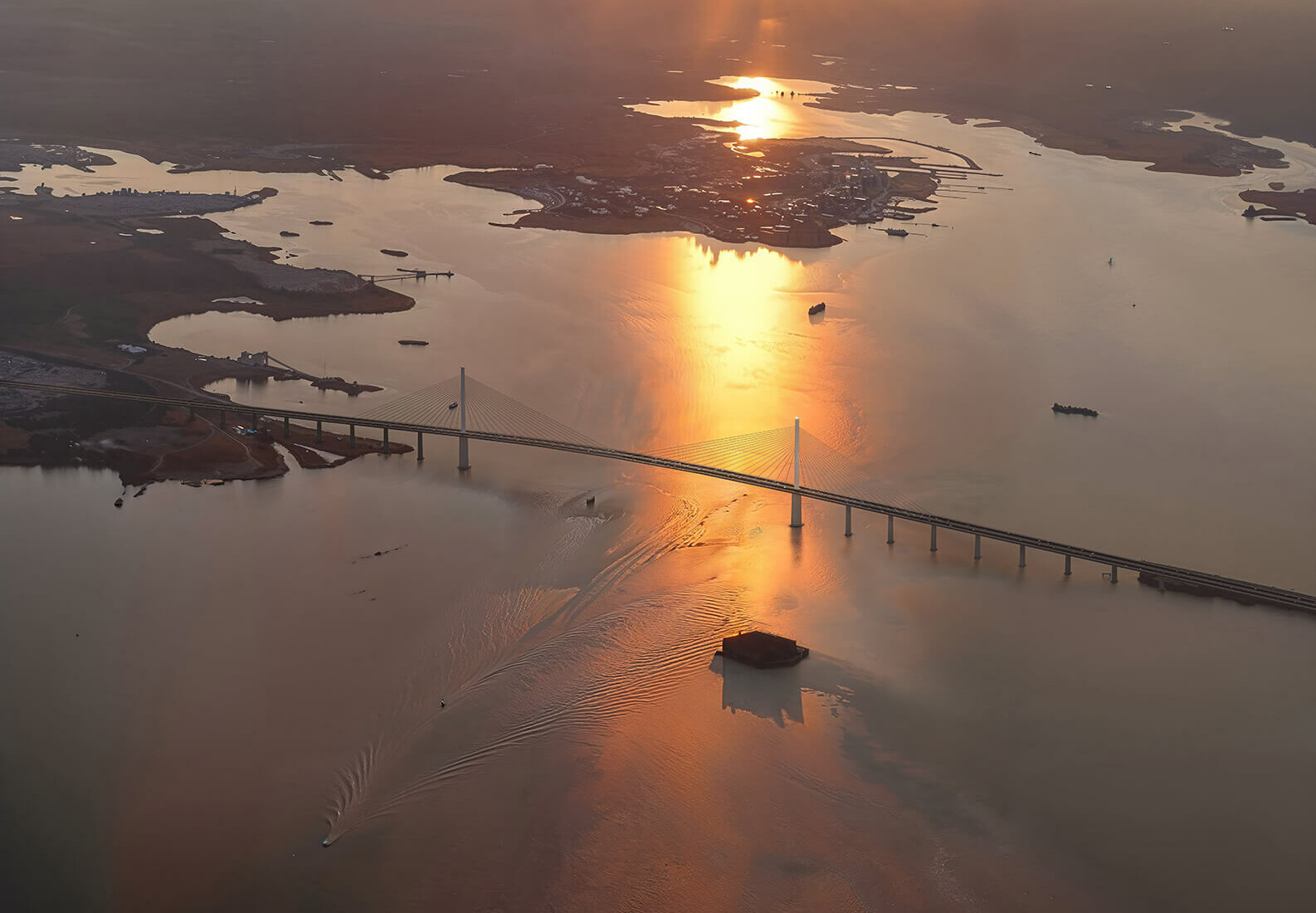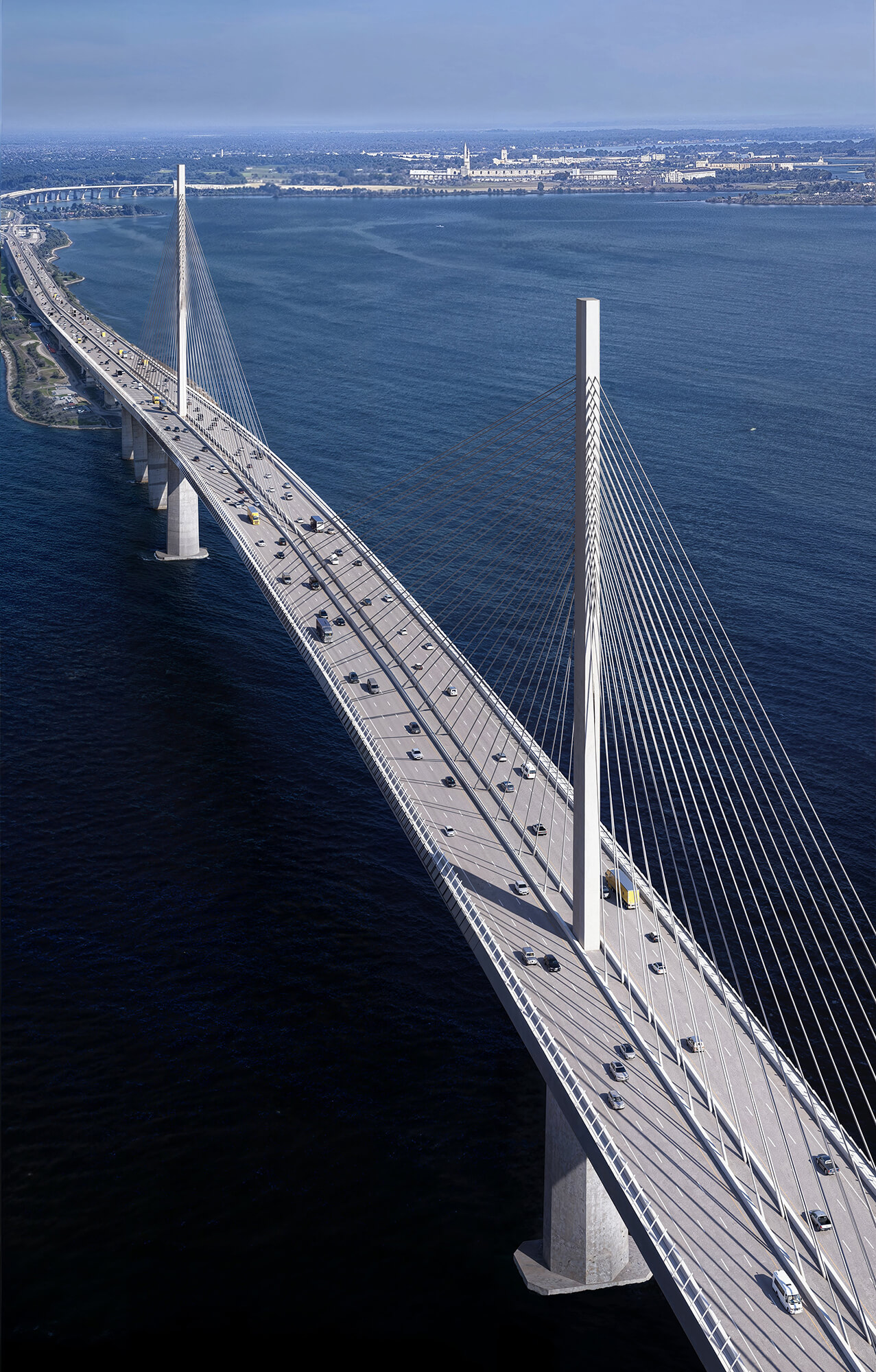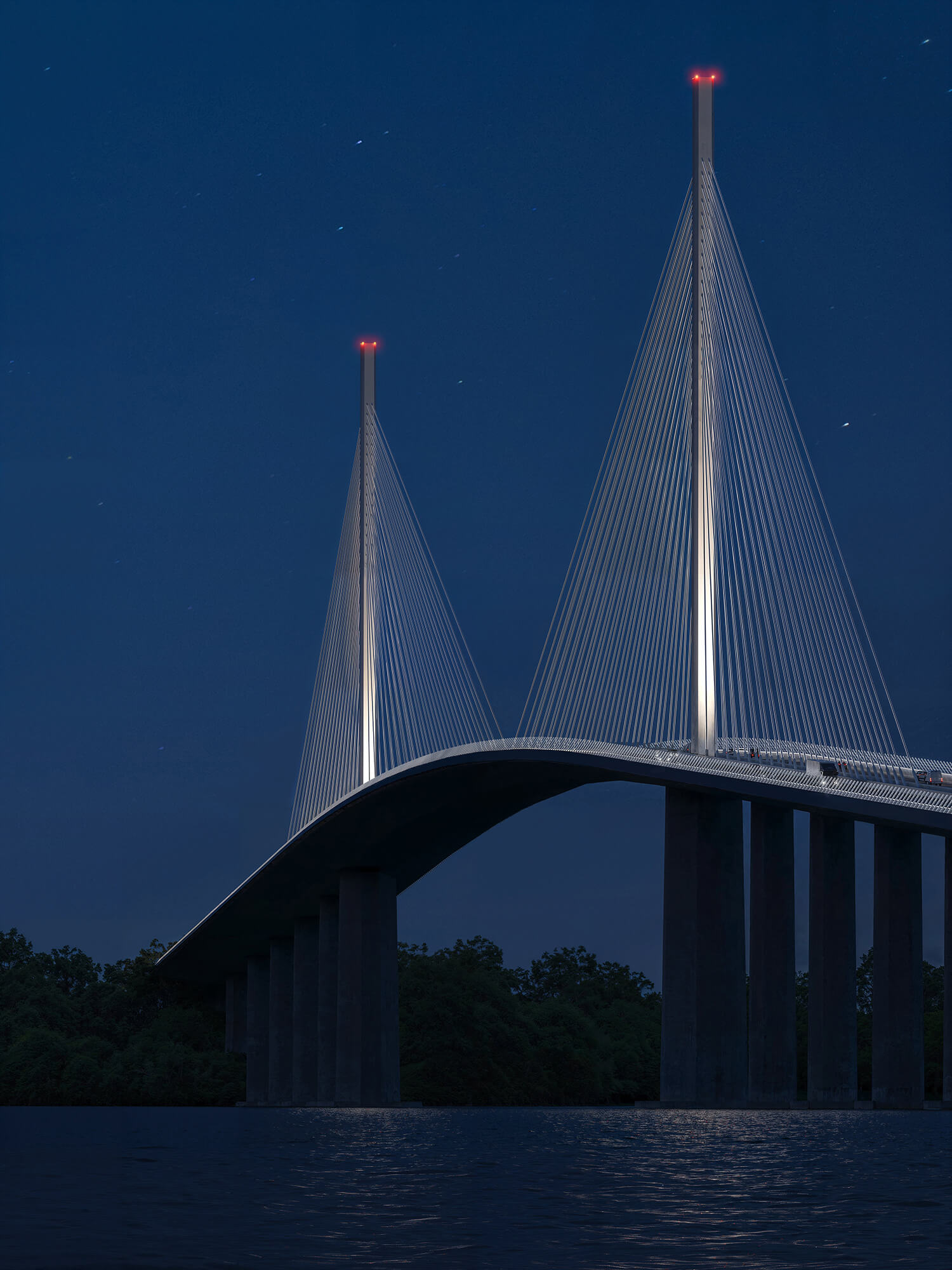When the Francis Scott Key Bridge collapsed early March 26 in Baltimore, six construction workers died in the Patapsco River, and the wreckage was broadcast on news stations around the U.S. The rubble stood as physical testimony to the sorry state of infrastructure investment in the U.S. and the precarity many undocumented laborers face.
Now, Carlo Ratti Associati (CRA) has a plan for replacing the 3,500-foot bridge together with WeBuild, an Italian construction group; and Michel Virlogeux, a French structural engineer. The renderings mark the first proposed design for a replacement bridge since the deadly March 26 collapse.
The collective design by CRA, WeBuild, and Virlogeux is a speculative proposal that hasn’t been approved by city or state officials. But designers note that the proposed structure would redefine the entrance to Baltimore Harbor and restore a lasting symbol of the historic Maryland city.

The bridge proposal in Baltimore builds upon Carlo Ratti’s work at the MIT Senseable City Lab. One of his projects, entitled Good Vibrations, explores new ways of monitoring the structural safety of bridges using cellphone data. The design for Baltimore’s replacement bridge incorporates this research, while also leveraging the robust portfolio of WeBuild and Michel Virlogeux.
Previously, WeBuild executed the rapid reconstruction (in record time) of the Ponte Morandi in Genoa, Italy, after that structure collapsed in 2018. And Michel Virlogeux was the engineer behind critical infrastructure projects in Europe like Lisbon’s Ponto Vasco da Gama and the Millau Viaduct in the Occitania region of France, the world’s tallest bridge. In Baltimore, CRA, WeBuild, and Virlogeux have synthesized their collective expertise to help Baltimore rebuild better.

One of the main problems with the old bridge (completed in 1977 by J. E. Greiner Company) was that its supporting pillars were practically equidistant from one another. This shrunk the egress gap for large vessels entering and exiting the Port of Baltimore—a design flaw which played a significant part in the March 26 disaster. Thus, the new design by CRA, WeBuild, and Michel Virlogeux addresses that problem by creating a much more generous window for large vessels to pass through vis-a-vis a cable-stayed structure.
The cable-stayed bridge design emphasizes safety and long-term adaptability, the team said. Cable-stayed structures are the best way to build at the necessary span while minimizing the project’s embodied carbon. This design element also removes the need to build artificial islands to protect the pillars in the Patapsco River.
The tentative design enlarges the bridge’s main span from 1,200 feet to 2,230 feet. Its primary support pillars are strategically sited in much shallower water with a depth of about 23 feet. This places the pillars far away from the navigation channel used by large vessels and insulates the critical infrastructure from another disastrous collapse.
Designers also note that their proposed structure increases the bridge’s clearance from 185 feet to 230 feet to allow tall vessels to safely pass underneath. As vessels become increasingly larger and taller, this height clearance is paramount for ensuring that the Port of Baltimore remains a major international hub in the years to come.
For ease of construction, the bridge design would be sited about 100 feet from the current site of the Key Bridge. This would allow the U.S. Army Corps of Engineers to quickly build a temporary crossing to allow for the permanent structure’s construction.

Last but not least, the design would offer a larger roadway with a new lane added in each direction. This is meant to accommodate increased vehicle capacity and address the high traffic levels that the previous bridge often faced. There are also smart features for safe traffic management and predictive maintenance techniques—technologies that derive from Ratti’s tenure at MIT’s Senseable City Lab.
Overall, the design will prevent extensive disturbance to Maryland’s economy, the design team said, while also adding a significant entrance to the most significant shipping port on the East Coast.

